Fainting First Aid: Causes, Treatment, and Prevention
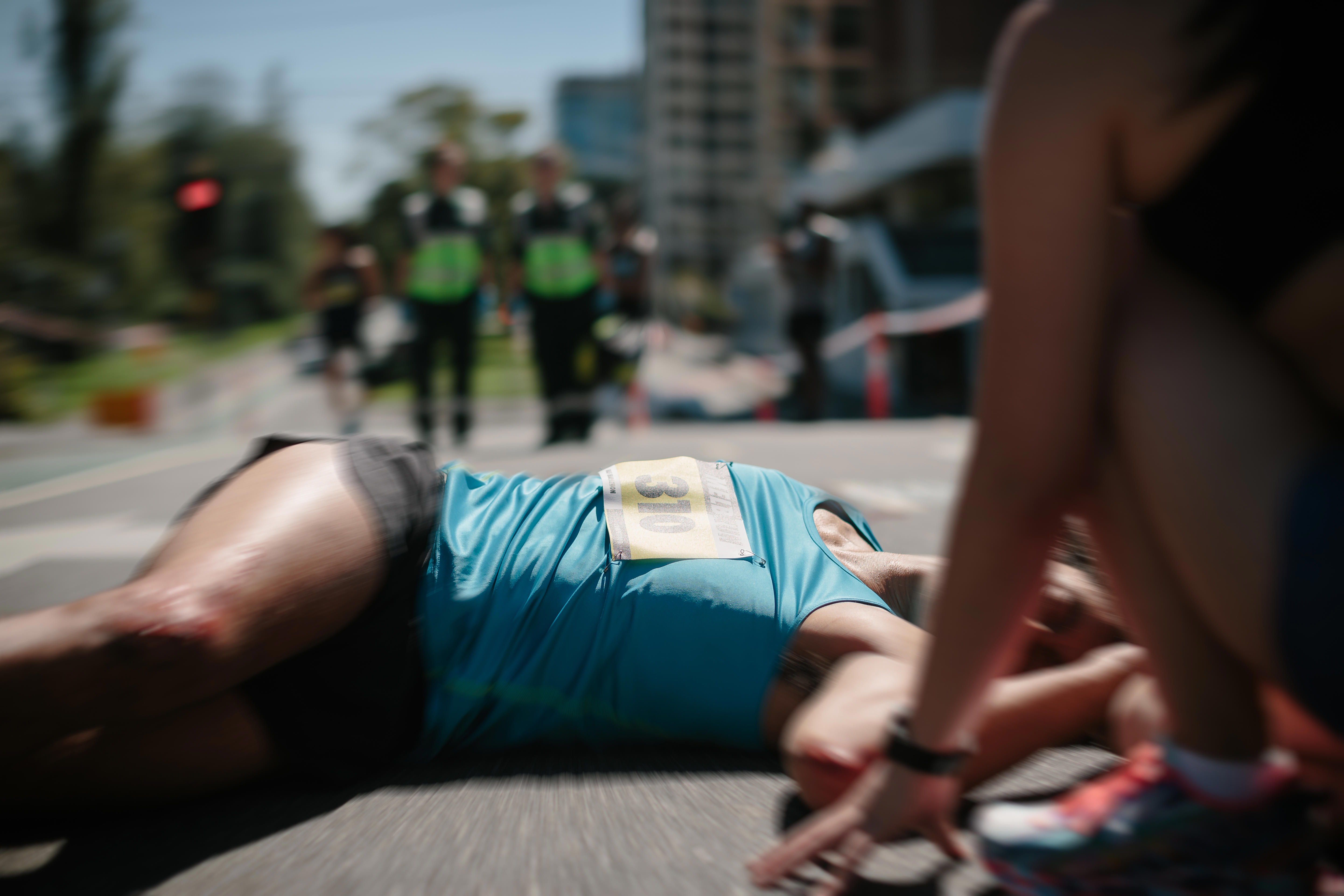
Fainting can be a quite common occurrence, but nonetheless, it is concerning to see someone collapse in front of you with no warning. You may not know if they’re simply fainting or having a serious incident such as a sudden cardiac arrest that could result in death. Once you learn the correct fainting First Aid treatment you will become more confident and able to help someone who feels faint.
What is Fainting?
Fainting, also known as syncope, is a sudden, temporary loss of consciousness that occurs when the brain experiences a brief decrease in blood flow. The person usually falls or slumps over. It can be a minor, temporary occurrence or it can be caused by a medical condition.
While it can be alarming, fainting is often harmless and can be managed effectively with proper knowledge and care. This article explores what fainting is, its common causes, how to treat it, and how to prevent it from happening.
Reasons Why a Casualty Might Faint
Understanding the underlying causes of fainting can help in managing and preventing episodes. Here are some common causes:
- Vasovagal Syncope: This is the most frequent cause of fainting, triggered by a sudden drop in blood pressure and heart rate. It can be caused by stress, standing up too quickly, or standing for a long time.
- Orthostatic Hypotension: A sudden drop in blood pressure when standing up from a sitting or lying position can lead to fainting. It’s often seen in people with dehydration or those taking certain medications.
- Dehydration: Inadequate fluid intake can reduce blood volume, leading to a drop in blood pressure and fainting.
- Low Blood Sugar: A significant drop in blood sugar levels can cause dizziness and fainting, particularly in people with diabetes.
- Heart Conditions: Certain heart conditions, such as arrhythmias or structural heart problems, can reduce blood flow to the brain and cause fainting.
- Hyperventilation: Rapid, shallow breathing, often due to anxiety or panic attacks, can lead to light-headedness and fainting.

Signs & Symptoms of Fainting
The casualty may:
• Lose consciousness/feel light-headed
• Feel dizzy or have vertigo
• Have faded or blurred vision
• Feel nauseated
• Have a pale, cool moist skin
• Have numbness in the fingers and toes
What Not To Do For Fainting First Aid
Do not:
• Get the casualty to sit down with their head between their legs
• Splash the face with water
Neither of these techniques are effective at preventing fainting or helping someone manage faintness.

How to Manage Faintness
Usually, people recover quickly, often within seconds, without lasting effects. However, if fainting is the result of an underlying medical condition or is recurrent, the casualty should see a doctor.
If someone faints, the following steps can help in their recovery:
- Ensure Safety: If someone collapses, ensure they are in a safe position to prevent injury. Gently lower them to the ground if they are standing.
- Position the Person: Place the person on their back with their legs elevated to help restore blood flow to the brain. This position can also help with recovery.
- Check for Responsiveness: Gently shake the person and ask if they are okay. If they do not respond, check their breathing and pulse.
- Allow Time to Recover: Most people recover quickly from fainting. Keep the person lying down for a few minutes and offer them water once they are fully conscious.
- Seek Medical Attention: If the person does not regain consciousness quickly, or if the fainting is accompanied by chest pain, confusion, or other concerning symptoms, seek emergency medical help immediately.
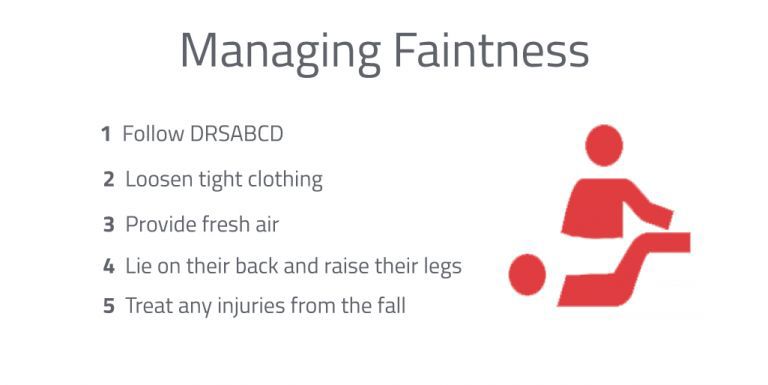
Preventing Faintness
While not all fainting episodes can be prevented, certain measures can help reduce the risk. If you feel yourself becoming faint, lie down on the ground until the feeling passes. This will stop you from hurting yourself.
Other ways to help yourself if you feel faint are:
- Stay Hydrated: Drink plenty of fluids to maintain blood volume and avoid dehydration.
- Eat Regularly: Maintain stable blood sugar levels by eating regular meals and snacks.
- Avoid Sudden Changes in Position: Move slowly when standing up from sitting or lying down to prevent orthostatic hypotension.
- Manage Stress: Practice relaxation techniques and manage stress to reduce the likelihood of vasovagal syncope.
- Recognise Triggers: Identify and avoid situations that may trigger fainting episodes, such as standing for long periods or overheating.
- Consult a Healthcare Professional: If fainting is frequent or accompanied by other symptoms, consult a healthcare professional to identify any underlying conditions.
Fainting is a common occurrence that is usually harmless, but understanding its causes, treatment, and prevention strategies is crucial for managing it effectively. By following these guidelines, you can help ensure a safer and more informed approach to dealing with fainting.
For more information on first aid and emergency response, visit St John Ambulance Victoria’s website or contact us for training and resources.
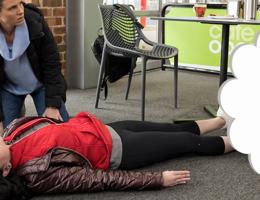
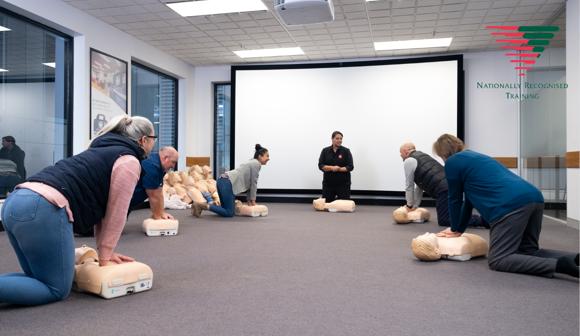
PROVIDE FIRST AID
Learn how to manage a range of common first aid scenarios.
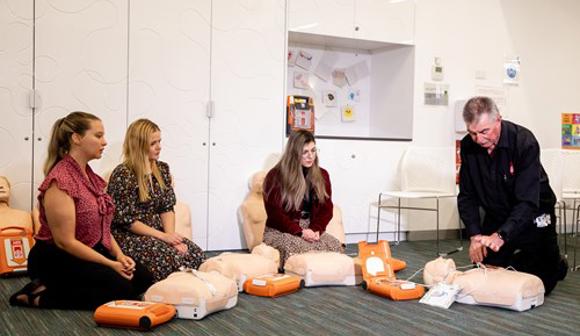
PROVIDE CARDIOPULMONARY RESUSCITATION
Learn the skills to perform life-saving (CPR) on an adult, child or infant who is unconscious and not breathing normally.

Mental Health First Aid
Learn about the signs and symptoms of common mental health problems in adults, how to recognise and respond to an emerging or worsening mental health problem and the treatments and supports available.
